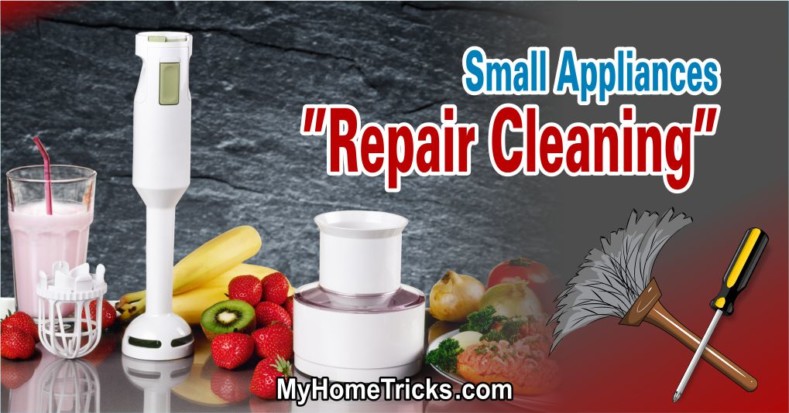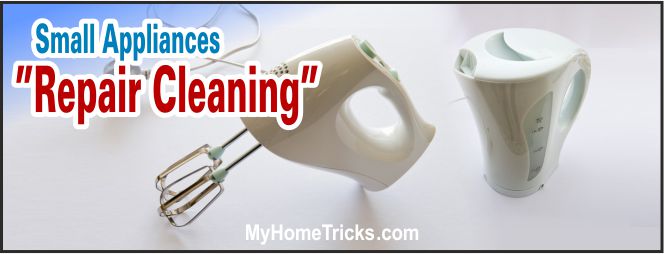Small Appliances Repair or Cleaning?
What is small appliance repair cleaning? Many problems with small household appliances are caused by the fact that they are not properly cleaned. Therefore, a lot of cleaning work means repairing them as well. This is called “repair cleaning.”
How to do Small Appliances Repair Cleaning? Let’s have a look at the subject:
Preventing Wear for Small Appliances Repair Cleaning
- Selecting speed: Use the correct speed on a food processor to avoid straining the motor. Check the manual to find the appropriate setting for the job to be done.
- Changing speed: If a mixer or food processor motor strains during mixing, switch it onto High or mix small quantities in separate batches. If a recipe recommends processing in batches, do so.
- Correcting faults: If a blender or food processor stops, switch it off and check that nothing is jamming the blade. Let it rest for a few seconds before turning it on again.
- Keep electrical appliances away from burners to prevent heat damage, and check cords regularly for wear, which could make them dangerous.
Small Appliances Repair Cleaning: Easing Sealed Lids
Using Spray Oil for Small Appliances Repair Cleaning: Occasionally spray the inside edge of a food processor lid with spray-on vegetable oil to ease the lid’s fit within the rim of the bowl. Avoid spraying the bowl, since this may affect some foods.
Small Appliances Repair Cleaning: Storing Appliances
- Hanging beaters: Rather than storing mixer beaters in a drawer, hang them on a small hook. This will help prevent them from becoming damaged and make them easy to find.
- Storing blades: Store sharp appliance blades in a special rack or box instead of leaving them in a drawer with other utensils. Alternatively, cut slots in a piece of styrofoam from the appliance packaging and keep blades in the slots.
- Covering appliances: Use a plastic cover to protect a food processor and keep it clean if the appliance is usually stored on a crowded counter.
Small Appliances Repair Cleaning
Kitchen appliances that are in everyday use will benefit from regular cleaning. Read the manufacturer’s instruction booklet for special instructions before doing this. Always unplug electrical items before you clean them, and do not immerse electrical parts in water.
Using tongs: Keep wooden food tongs or two chopsticks near a toaster to remove foods that have become stuck inside.
Blowing Out Crumbs for Small Appliances Repair Cleaning: Use a compressed air spray to expel crumbs through the bottom of a toaster. These sprays are available from photographic equipment suppliers. Unplug the toaster before cleaning.
Clearing greasy deposits: If your garbage disposal unit becomes clogged with greasy food, drop a handful of ice cubes into it, then switch it on for a few seconds. The ice will set the fat so that it can be ground up and disposed of.
Clearing clogged filters: To remove mineral deposits from a blocked coffee maker, fill the tank with equal parts of distilled vinegar and water. Switch on the coffee maker and brew once. After that, brew it again with clear water before using it. This is a common application for cleaning small appliances.
Using detergents: After using a blender container, half-fill it with a solution of dish-washing liquid and warm water to clean it. Run the blender for a few seconds to remove any food deposits.
Using bread: If you have used a coffee grinder or mill for grinding spices, remove all traces of spice odor and flavor that may taint the coffee by grinding a few pieces of bread before using it again.
Tip: These are not the only ways to clean small appliances. You can find more information about this subject in the “tags” below.






